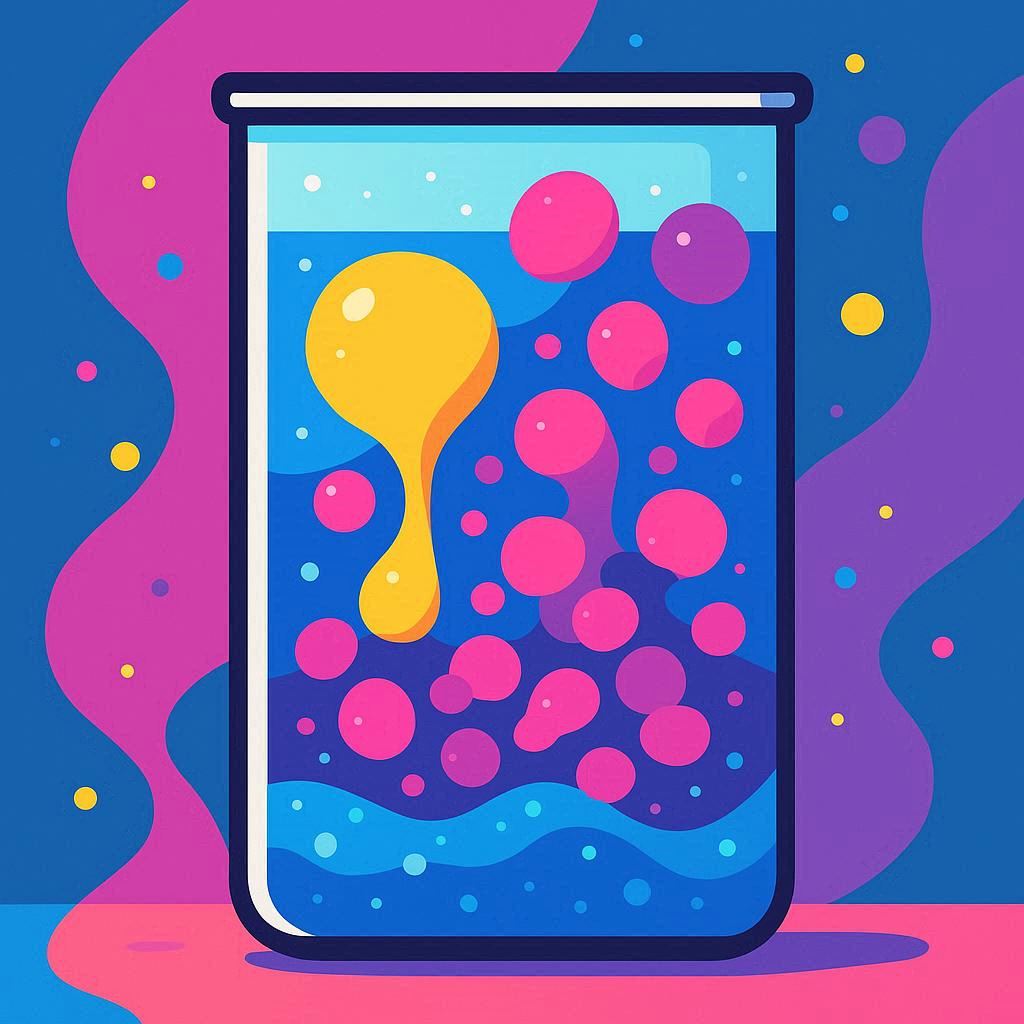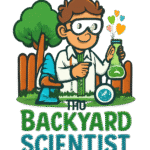The Rainbow Milk Effect is a mesmerizing scientific phenomenon that combines the principles of surface tension, interfacial tension, and vibrancy to create a surreal visual experience. It’s a beautiful reminder of how fascinating the world of science can be, even in the simplest of experiments. This blog post will delve into the science behind this colorful display, its history, and how you can replicate this stunning effect at home. So, let’s dive into the captivating world of surface tension and explore the Rainbow Milk Effect in all its glory!
Understanding the Rainbow Milk Effect
The Rainbow Milk Effect is a striking visual phenomenon where droplets of food coloring, when placed on the surface of milk, create a vibrant, rainbow-like effect due to differences in surface tension across the liquid’s surface. This effect is a classic in science education and has been wowing students and science enthusiasts for decades. The beauty of this experiment lies in its simplicity and the profound scientific principles it illustrates.
A Brief History of Surface Tension
Long before the Rainbow Milk Effect became a classroom favorite, scientists were studying the concept of surface tension. The ancient Greeks were among the first to observe this phenomenon, noting that water insects could skiter across the surface of ponds without sinking. In the 18th century, the French physicist Pierre-Simon Laplace provided a detailed mathematical description of the forces at play in surface tension. Later, Albert Einstein himself contributed to the understanding of surface tension, recognizing it as a fundamental property of liquids.
The Science Behind the Rainbow Milk Effect
The Rainbow Milk Effect is a perfect demonstration of how surface tension works. Here’s a breakdown of the forces at play:
-
Surface Tension: Surface tension refers to the elastic tendency of liquids to minimize their surface area. In the case of milk, surface tension causes the liquid to behave as if it has an ‘elastic skin’ at its surface. This is why certain objects, like water striders, can float on water without sinking.
-
Interfacial Tension: When two liquids that don’t mix come into contact, such as oil and water, there is a phenomenon known as interfacial tension. This is essentially the ‘boundary’ where the two liquids meet, and it plays a crucial role in the Rainbow Milk Effect.
-
Surfactants: Surfactants, short for ‘surface-active agents,’ are substances that reduce the surface tension between two liquids. In the case of the Rainbow Milk Effect, food coloring acts as a surfactant when it interacts with the milk. This allows the colors to spread and mix in a unique and visually striking way.
-
Capillary Action: Capillary action is another important factor in the Rainbow Milk Effect. It’s the ability of a liquid to flow through a narrow space without the need for pressure. This is why the colors in the experiment spread out in such a fascinating manner.
How to Create the Rainbow Milk Effect at Home
Now that we’ve covered the science behind the Rainbow Milk Effect, let’s move on to the fun part – recreating it at home! This experiment is a great way to engage children in science and spark their curiosity about the natural world. Here’s a simple step-by-step guide to get you started:
Materials Needed:
- A shallow, clear container or a glass
- Milk (whole milk works best)
- Food coloring (red, orange, yellow, green, blue, and purple)
- A cotton swab or a toothpick
- Dish soap (optional)
Instructions:
- Prepare Your Setup: Fill the glass with milk, leaving about an inch at the top. This allows for the colors to spread without spilling over.
- Add the Colors: Dip the cotton swab or toothpick into a food coloring bottle and gently place a small droplet on the surface of the milk. Repeat this process for each color, placing the droplets close to each other but not overlapping.
- Observe the Initial Effect: At this point, you’ll notice that the colors float on the surface of the milk, forming distinct droplets. This is due to the surface tension of the milk repelling the water-based food coloring.
- Add Dish Soap (Optional): If you want to intensify the effect, add a small drop of dish soap to the center of the milk. Dish soap acts as a surfactant, breaking down the surface tension of the milk and allowing the colors to spread and mix in a more dramatic fashion.
- Experiment and Enjoy: Continue adding more drops of color and observe how the colors interact with each other and the milk. You can also experiment with different types of milk or alternative liquids to see how the effect changes.
Exploring the Science in Greater Depth
For those who want to delve deeper into the science behind the Rainbow Milk Effect, there are several additional concepts worth exploring. These include:
-
Surfactants and Their Role: While we briefly touched on surfactants earlier, they play a crucial role in breaking down surface tension. Not only are surfactants essential in everyday products like dish soap and detergents, but they’re also used in various industrial applications. Learning more about how surfactants work can provide a deeper understanding of the science behind the Rainbow Milk Effect.
-
Interfacial Tension and Its Applications: The concept of interfacial tension is not only limited to the Rainbow Milk Effect. It has real-world applications in fields such as chemistry, engineering, and even medicine. By studying interfacial tension, scientists can develop new materials and technologies that improve everyday life.
-
Capillary Action and Its Importance: Capillary action is another fascinating topic that plays a significant role in the Rainbow Milk Effect. This phenomenon is responsible for how plants draw water up their roots and how water moves through porous materials like paper towels. Understanding capillary action can provide valuable insights into the natural world.
Fun Variations and Experiments
Once you’ve mastered the basic Rainbow Milk Effect, you can take your experimentation to the next level by trying out these fun variations:
- Using Different Types of Milk: Experiment with different types of milk, such as almond milk, soy milk, or oat milk, to see how they affect the Rainbow Milk Effect. Each type of milk has a different surface tension, which will produce slightly different results.
- Adding Hues and Tones: Instead of using standard food coloring, try creating different hues and tones by mixing the colors before adding them to the milk. This can create a broader range of colors and patterns, adding an artistic element to the experiment.
- Incorporating Oil: Add a few drops of oil to the milk and observe how it interacts with the food coloring. This introduces the concept of immiscibility, where two liquids cannot mix, and adds an extra layer of complexity to the experiment.
- Using Different Liquids: Expand your exploration by using different liquids, such as water or juice, to see how they interact with food coloring and other substances. This can help you understand the properties of various liquids and how they behave under different conditions.
The Educational Value of the Rainbow Milk Effect
The Rainbow Milk Effect is more than just a visually appealing science experiment; it’s a valuable educational tool. This experiment provides a hands-on learning experience that can help students of all ages gain a better understanding of fundamental scientific concepts. Here are just a few of the educational benefits of the Rainbow Milk Effect:
- Introduction to Surface Tension: The Rainbow Milk Effect offers a straightforward introduction to the concept of surface tension. By observing how the colors interact with the milk, students can gain a visual understanding of this scientific principle.
- Understanding Surfactants: The experiment provides an excellent opportunity to discuss surfactants and their role in breaking down surface tension. This can lead to further exploration of how surfactants are used in everyday products and industrial applications.
- Exploring Color Theory: The use of different colors allows for a fun and interactive way to explore color theory. Students can experiment with mixing colors to create new hues and understand how light and pigments interact.
- Encouraging Critical Thinking: The Rainbow Milk Effect encourages critical thinking and scientific inquiry. Students can hypothesize about how different variables will affect the outcome of the experiment and test their predictions through hands-on experimentation.
Conclusion
The Rainbow Milk Effect is a captivating example of how science can create beauty and wonder in the simplest of ways. Through its stunning display of colors and its demonstration of fundamental scientific principles like surface tension, this experiment continues to inspire curiosity and a love of learning in people of all ages. Whether you’re a parent looking for a fun and educational activity to do with your children or a science enthusiast eager to explore the fascinating world of surface tension, the Rainbow Milk Effect is an unforgettable experience that will leave you in awe of the natural world.
So, the next time you see a glass of milk, remember the incredible forces that are at work on its surface. Who knows? You might just be inspired to create your own rainbow-colored masterpiece and uncover the secrets of surface tension in the process!



